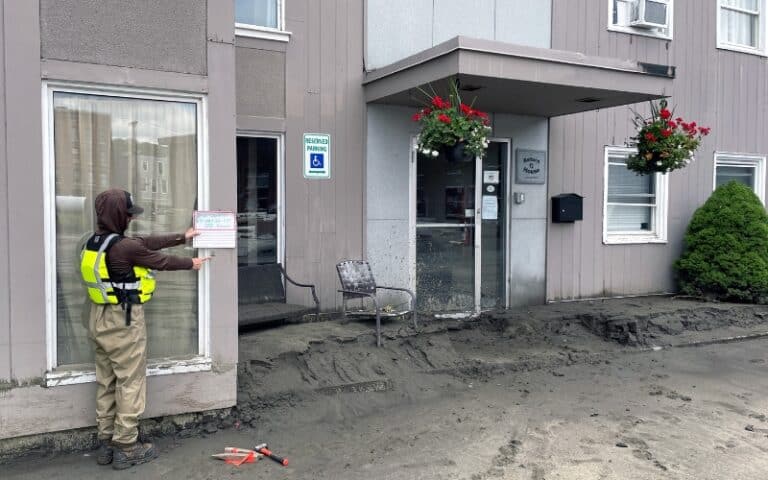‘A Win for Flood Resilience’: HUD Rolls Out New Flood Standard
In a huge victory for flood mitigation advocates and communities across the country, the U.S. Department of Housing and Urban Development (HUD) has taken a major step in addressing future flood risk and ensuring the safety of HUD-assisted residents and federal investments.
In its final rule for Federal Flood Risk Management Standard (FFRMS) published in the Federal Register on April 23, HUD is requiring any new or rebuilt HUD-funded homes to be elevated 2 feet above the local flood level and enlarges the flood zones where the elevation requirement applies.
ASFPM Executive Director Chad Berginnis praised the new rule and said he expects that states, counties and municipalities will work to adopt stronger elevation requirements to match HUD’s new standard.
“This rule is a win for the country and a win for flood resilience,” Berginnis told E&E News. “We have got to change the trajectory of losses in the country, and it’s only by having higher standards that we’re going to get there.”
The rule also establishes a preference for (but does not yet require) use of a Climate Informed Science Approach (CISA) to determine the floodplain of concern for HUD-funded projects, when possible. The floodplain identified using CISA provides the elevation and flood hazard area that results from using a climate-informed science approach based on best-available, actionable hydrologic and hydraulic data.
“In updating flood risk standards, HUD is providing communities the flexibility to calculate their true risk. People of modest means are more likely to live in a flood-prone place and have a longer time recovering when disaster strikes,” said Marion McFadden, Principal Deputy Assistant Secretary for Community Planning and Development. “This rule will ensure HUD supported properties have the best chance of being undisturbed when flooding occurs. It is the responsibility of the federal government to ensure that taxpayer investments are built to withstand foreseeable risk — and has the added benefit of reducing the cost of flood insurance for property owners.”
HUD estimates approximately 10% of new Federal Housing Administration (FHA) single family homes constructed each year are within the 100-year floodplain, and many of those homes are already located in areas where state or local standards are higher than HUD’s previous standard. The updated standard reduces FHA homeowners’ exposure to losses caused by flooding, reduces insurance costs, and most importantly protects the risk to life faced in areas of greater flood risk.
“After many years in the making, this is the best possible standard that HUD could have issued,” said Shana Udvardy, senior climate resilience policy analyst at the Union of Concerned Scientists. “For decades, the federal government has been relying on a standard based on the past climate. This rule will change that business-as-usual practice, which wasted taxpayer dollars, put people in harm’s way and allowed for the limited affordable public housing stock to be flooded, in some cases again and again. This puts an end to that foolhardy cycle.”
Flooding is the most common and costly weather-related disaster in the United States costing taxpayers billions of dollars a year in economic losses, health impacts and funding to recover damages and rebuild or repair property. In 2023, the Congressional Budget Office (CBO) estimated that the expected annual flood damages in 2020 to homes with federally backed mortgages were $9.4 billion and projected to increase to $12.8 billion annually by 2050. The impact on individual and multifamily homeowners is estimated to be equally staggering, with just 1 inch of floodwater resulting in losses ranging from $10,000 to $27,000 depending on the size of the home. When the elevation and floodproofing standards required by the rule are applied, HUD estimates the total combined benefits for each year of construction will result in approximately $56.4 million to $324.3 million in savings over the lifetime of the properties (40 years). These savings are a result of cost reductions due to decreased flood insurance premiums, reduced flood damage to buildings, cost avoided for homeowners and tenants, reduced expenses associated with relocation or temporary housing, and loss of income due to flooding events.
Some industry groups, including the National Association of Home Builders and the Mortgage Bankers Association, raised concerns about the new elevation standard when HUD proposed it in 2023. The NAHB issued a statement that they are “disappointed” in the final rule.
New Flood Standard Revisions
The final FFRMS rule includes the following revisions to the proposed rule based on public and interagency comments received, including comments ASFPM submitted last June:
- Climate Informed Science Approach (CISA) – HUD revised the rule to indicate that the Department’s adoption and intent to require use of any federal tool to implement CISA will include an additional, subsequent publication of a Federal Register notice explaining the intent to do so and soliciting public comment. Grantees can, however, use a federal tool on a voluntary basis prior to publication of the FR notice. The rule was also revised to more clearly allow local CISA tools and resources on a voluntary basis, if local data is available, actionable, and meets certain criteria as defined in the rule.
- Substantial Improvement Elevation Requirements – HUD removed the substantial improvement trigger for elevation from Part 200 to alleviate concerns that the low-funding threshold could frequently trigger “substantial improvement” in particular communities. HUD wanted to avoid limiting homeowner eligibility for rehabilitation mortgage insurance programs to address necessary improvements such as roof repair in areas with lower home values. Part 200 continues to require a two-foot elevation for those newly constructed homes within the 100-year floodplain as was proposed in the draft rule. The FFRMS elevation requirements continue to apply to substantial improvement and new construction under all HUD programs subject to Part 55.
- Manufactured Housing Elevation – HUD revised the Part 55 section of the rule to include manufactured housing in the definitions of substantial improvement and new construction to explicitly identify new siting of manufactured housing units as subject to elevation requirements when Part 55 compliance is required. Note: The Part 200 section of the rule does not apply to manufactured housing except to implement installation requirements at 24 CFR part 3285.
- On Site Floodways – HUD revised the rule to expand the incidental floodway provision to allow rehabilitation of existing structures located in the floodplain when there is also a floodway on the property/parcel. This revised provision expands eligible activities to include rehabilitation within the footprint of an existing structure but maintains the longstanding requirement of obtaining a permanent covenant to preserve all floodplain areas from future development and new construction on the parcel.
HUD has created a webpage with additional guidance/FAQ on the new rule that we encourage ASFPM members to review.



